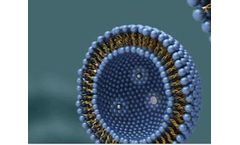Liver Cell Articles & Analysis
22 articles found
Non-alcoholic fatty liver disease (NAFLD) has emerged as a significant public health concern, associated with obesity, insulin resistance, and a spectrum of metabolic disorders. ...
Hepatocytes are the chief functional cells of the liver, responsible for the selective uptake, metabolism and excretion of most drugs. ...
Subsequently, apolipoprotein E (ApoE) binds with the LNP to form a corona, which is recognized by low-density lipoprotein receptors on liver cells and promotes LNP internalization. Many studies have followed the prescription of Onpattro to prepare liver-targeted LNPs. ...
It has good biofilm property and containment and can promote cell uptake and endosomal escape while avoiding nuclease degradation. The positive charge carried by cationic liposomes can neutralize the negative charge carried by siRNA to form a tightly structured complex that greatly extends the cycle time and facilitates the delivery of siRNA. Peptide-siRNA Conjugates ...
Pluripotent stem cells — cells with the ability to differentiate into nearly any cell type in the body, constituting a significant potential for regenerative medicine. Among these, induced Pluripotent Stem Cells (iPSCs), in particular, have garnered substantial interest from the scientific community due to their ability to ...
The results showed that tetrahydrocurcumin could significantly reduce the blood glucose of diabetic rats and improve the plasma insulin level, indicating that tetrahydrocurcumin has a good hypoglycemic effect on type 2 diabetes. 2.Anti-oxidative Stress Effect Murugan P et al. used niacinamide to induce diabetic rats, and the results showed that tetrahydrocurcumin could significantly improve the ...
By comparing the toxicity of chitosan oligosaccharides with different molecular weights and different degrees of deacetylation to prostate cancer cells PC3, lung cancer cells A549 and liver cancer cells HepG2, the researchers found that chitosan with low molecular weight and low degree of deacetylation has Better anti-tumor ...
Catalase is an antioxidant enzyme commonly found in almost all living organisms, mainly in chloroplasts, mitochondria, endoplasmic reticulum of plants, liver and red blood cells of animals. It is the marker enzyme of the peroxisome, accounting for about 40% of the total peroxisomal enzymes. ...
Loss of glutathione reductase makes cells more sensitive to oxidants and antibiotics. For patients with liver damage, the detection of glutathione reductase can enable us to understand whether the function of the body's glutathione antioxidant system is sound. The reduction of glutathione reductase indicates that the detoxification function and antioxidant ...
Alcohol dehydrogenase is abundant in human and animal liver, plant and microbial cells. It is a zinc-containing metalloenzyme with broad substrate specificity. ...
The liver is one of the most vital organs of the body. It means one cannot live without the proper functioning of the liver. ...
Many may not have heard of nonalcoholic fatty liver (NAFL) yet it is a very common condition. If NAFL is not addressed, it can progress to a serious condition known as Nonalcoholic fatty liver disease (NAFLD) Non-alcoholic fatty liver is the buildup of extra fat in liver cells that is not caused by alcohol. It is ...
ByAlgatech
Studies shows that silymarin may help with the regeneration of liver cells, decrease inflammation and protect liver cells from damage in an antioxidant type mannerriiil « Read: Study shows FucoVital to be more effective than silvmarin in preventing harmful fat accumulation in liver cells ...
ByAlgatech
NAFLD is now recognized as the most common cause of chronic liver disease in the western world, with an estimated prevalence of 25% worldwide, and is projected to become the leading indication for liver transplant by 2025. ...
Rather than replacing proteins or genes, mRNA instructs cells to produce specific proteins. The patient’s cell then becomes the factory that produces the needed protein. ...
Publication Summary: Nonalcoholic fatty liver disease (NAFLD) is a chronic condition that originates as lipid accumulation within hepatocytes (steatosis) and progresses into nonalcoholic steatohepatitis (NASH), characterized by lipid accumulation, inflammation, oxidative stress, and fibrosis. NAFLD is now recognized as the most common cause of chronic liver ...
Ingestion of this specific type of arsenic can also cause a reduction in blood cell production, liver enlargement, loss of sensation in the limbs, and brain damage. ...
Ingestion of this specific type of arsenic can also cause a reduction in blood cell production, liver enlargement, loss of sensation in the limbs, and brain damage. ...
Publication Summary: Conventional cell therapy and tissue engineering approaches to treating liver diseases and injury are limited by low cell retention, poor engraftment, poor graft durability and complications including portal hypertension. Integration of next generation technologies such as 3D bioprinting is an essential step towards the ...
In this study, we have used two different processes for surface modification of silicon nanowire. As the DNA of liver cancer cells has mutation at codon 249 which changes one base guanine (G) by base thymine (T), we thus designed 17–mer DNA oligonucleotides, which were used as a receptor to capture the DNA of p53 mutated gene. The fabricated SiNW biosensor could ...











